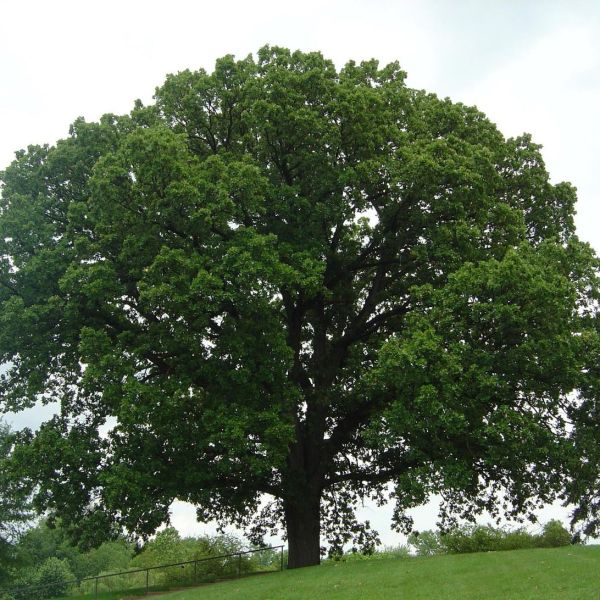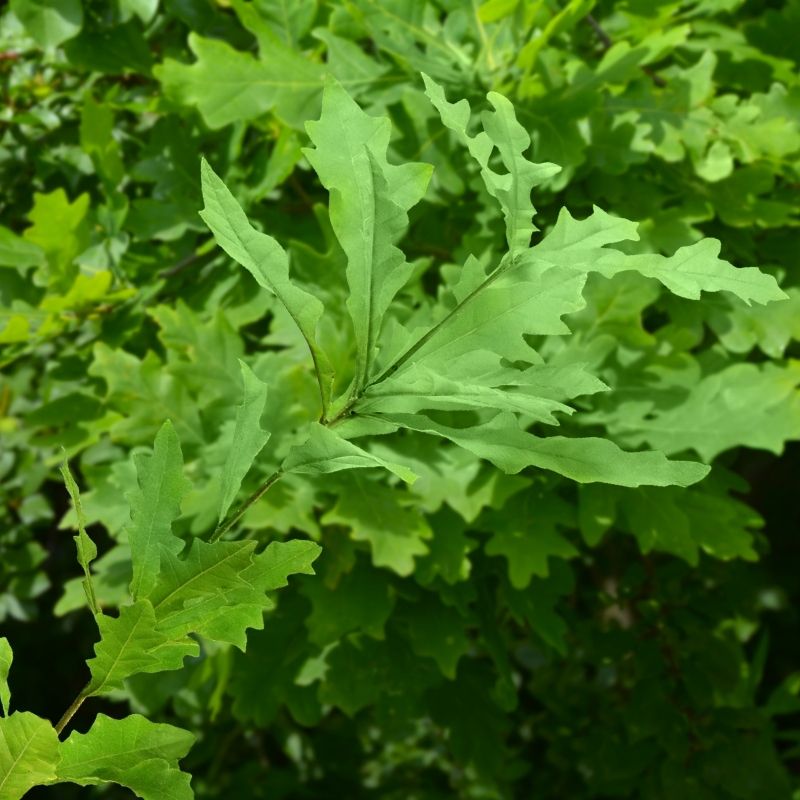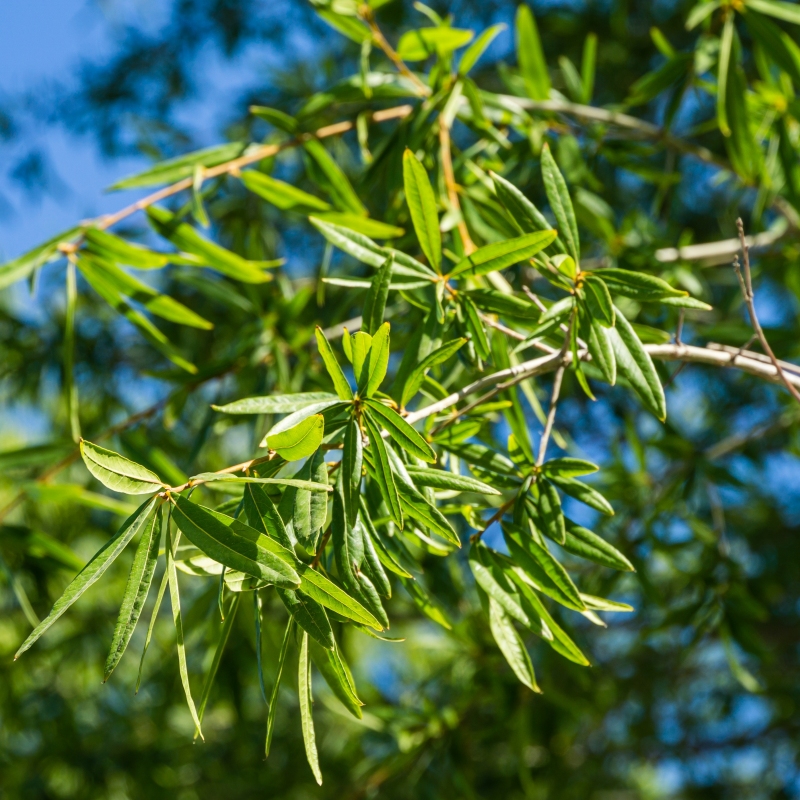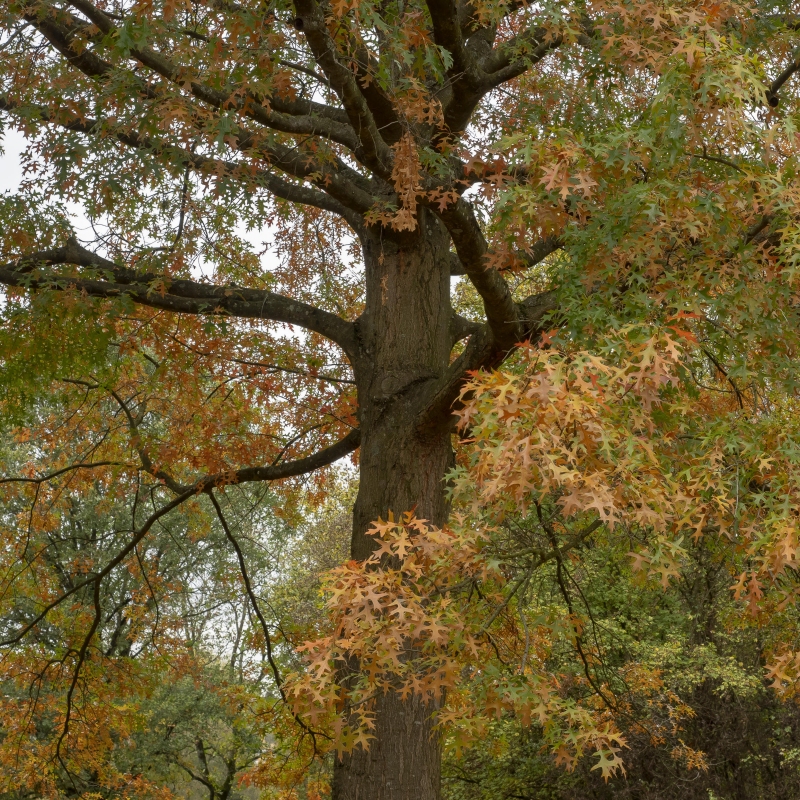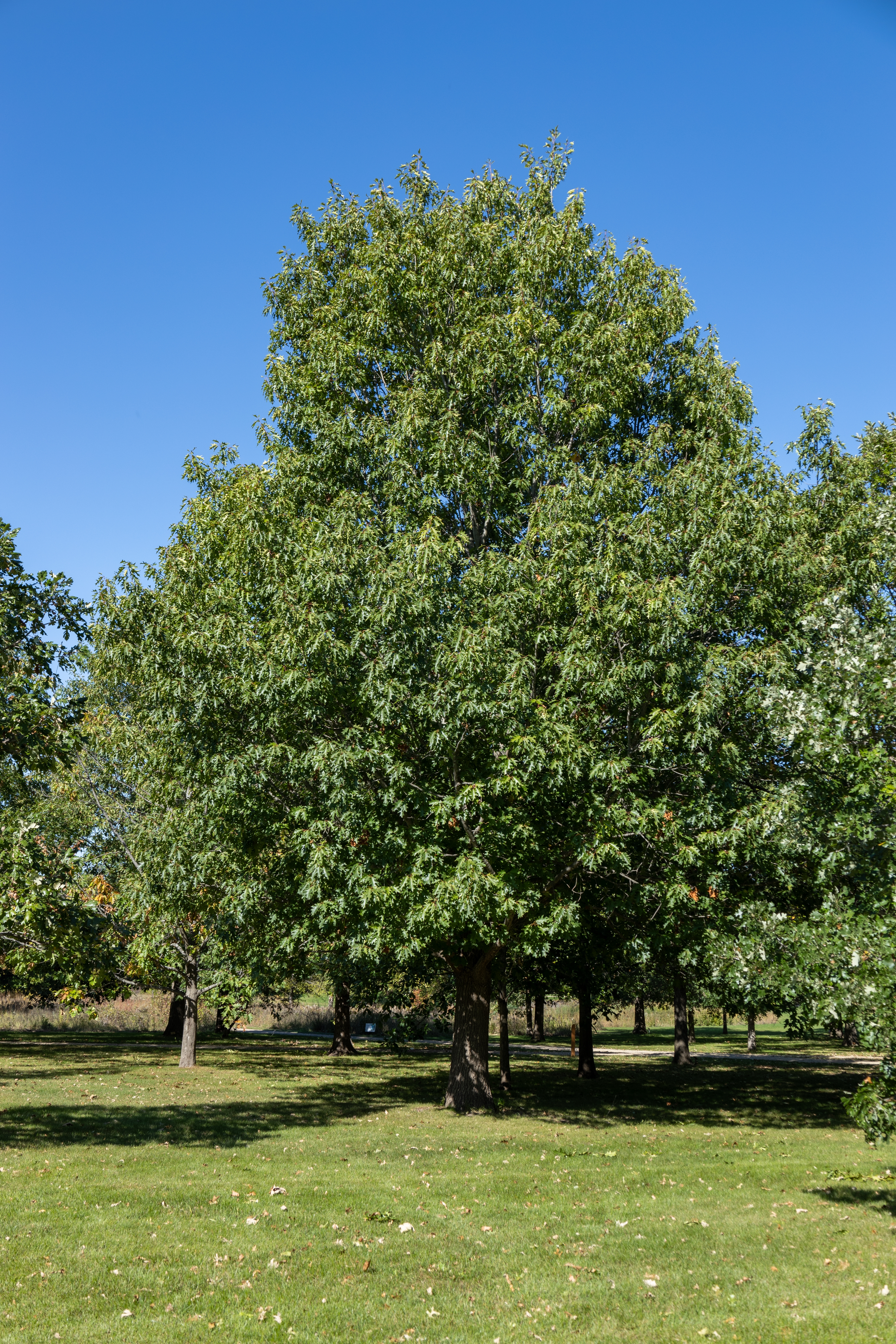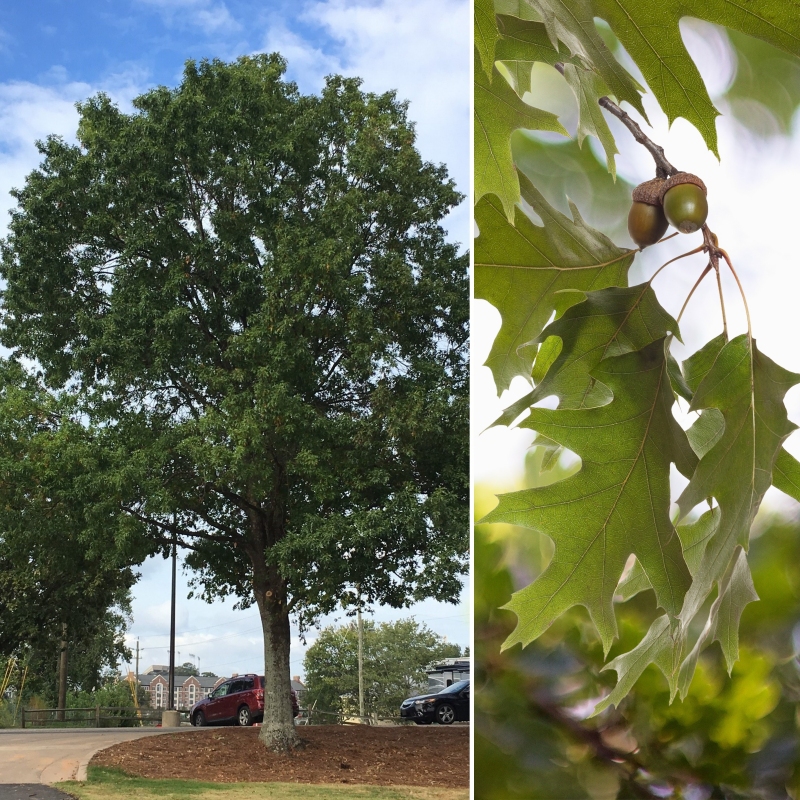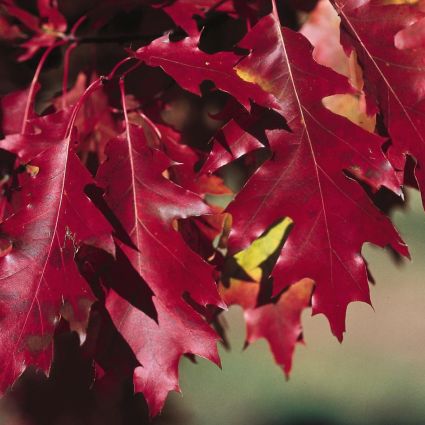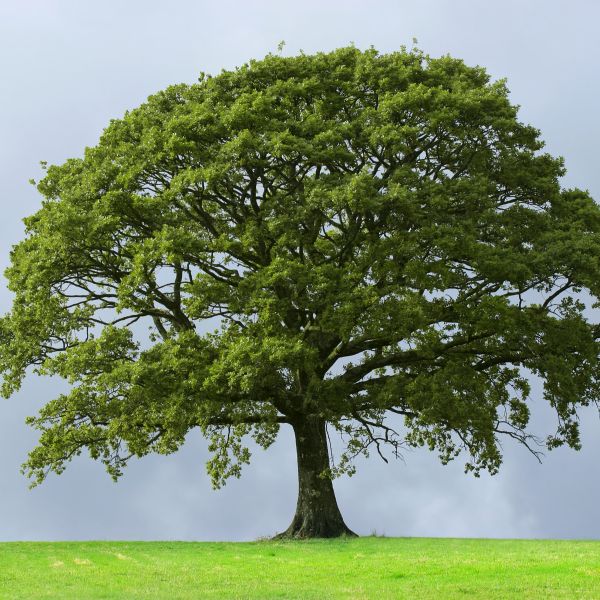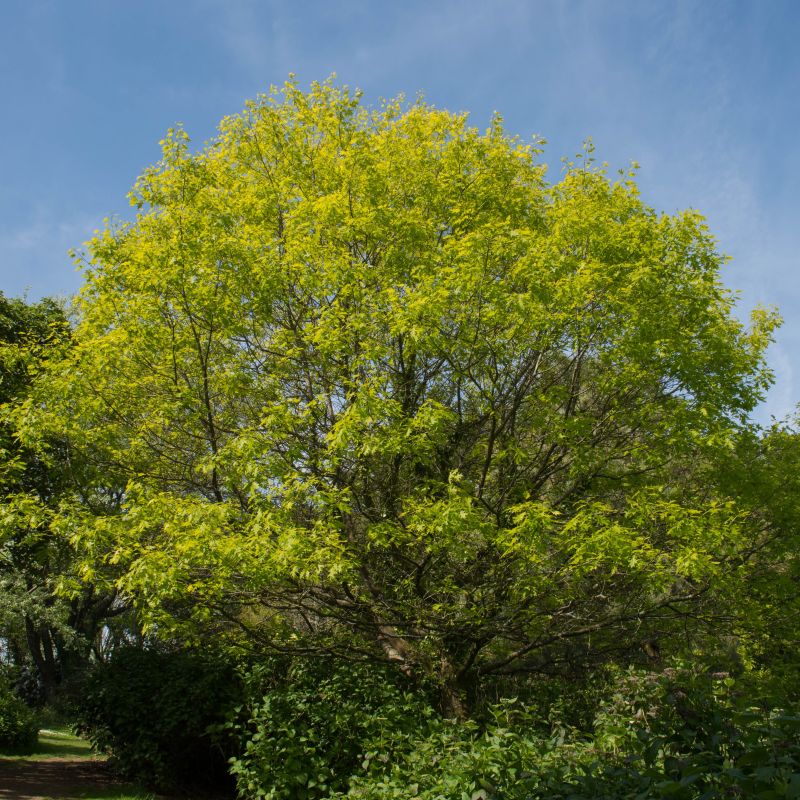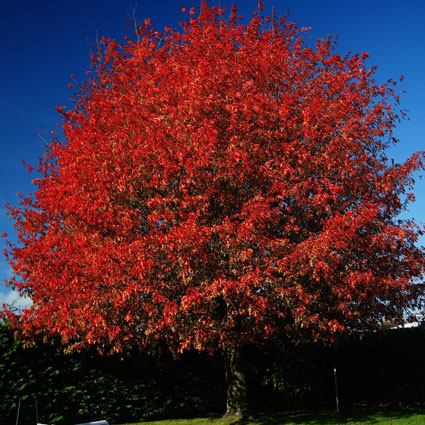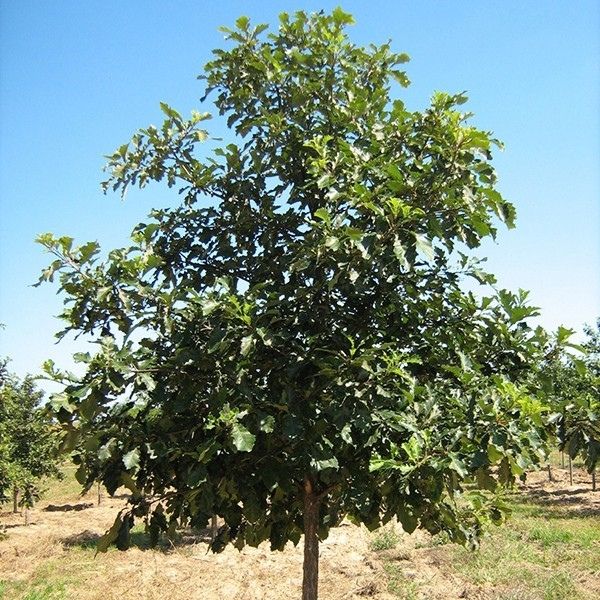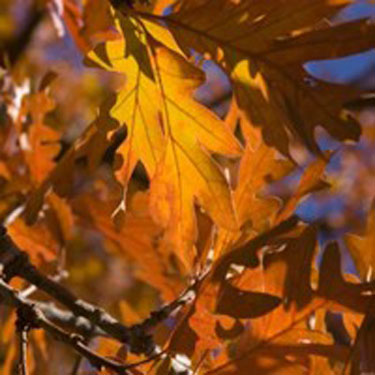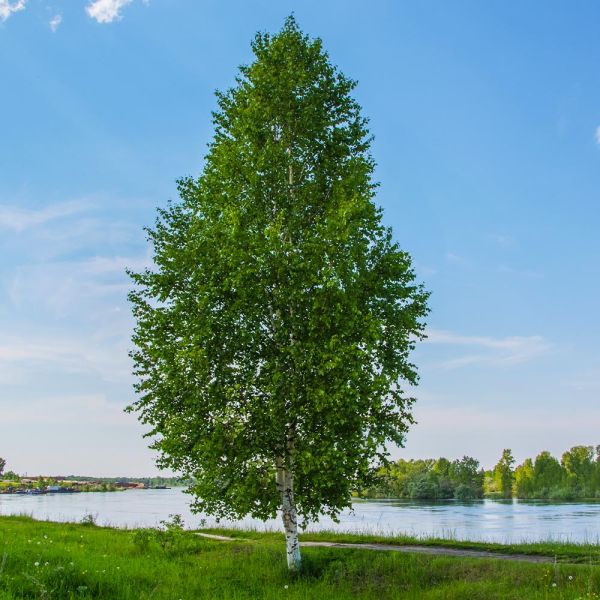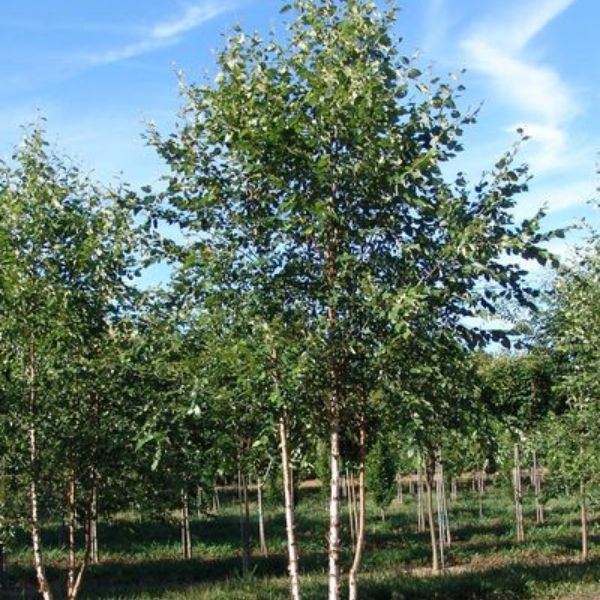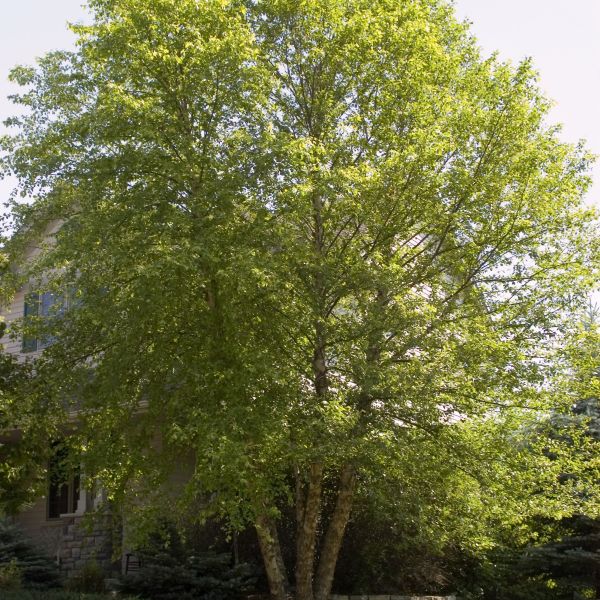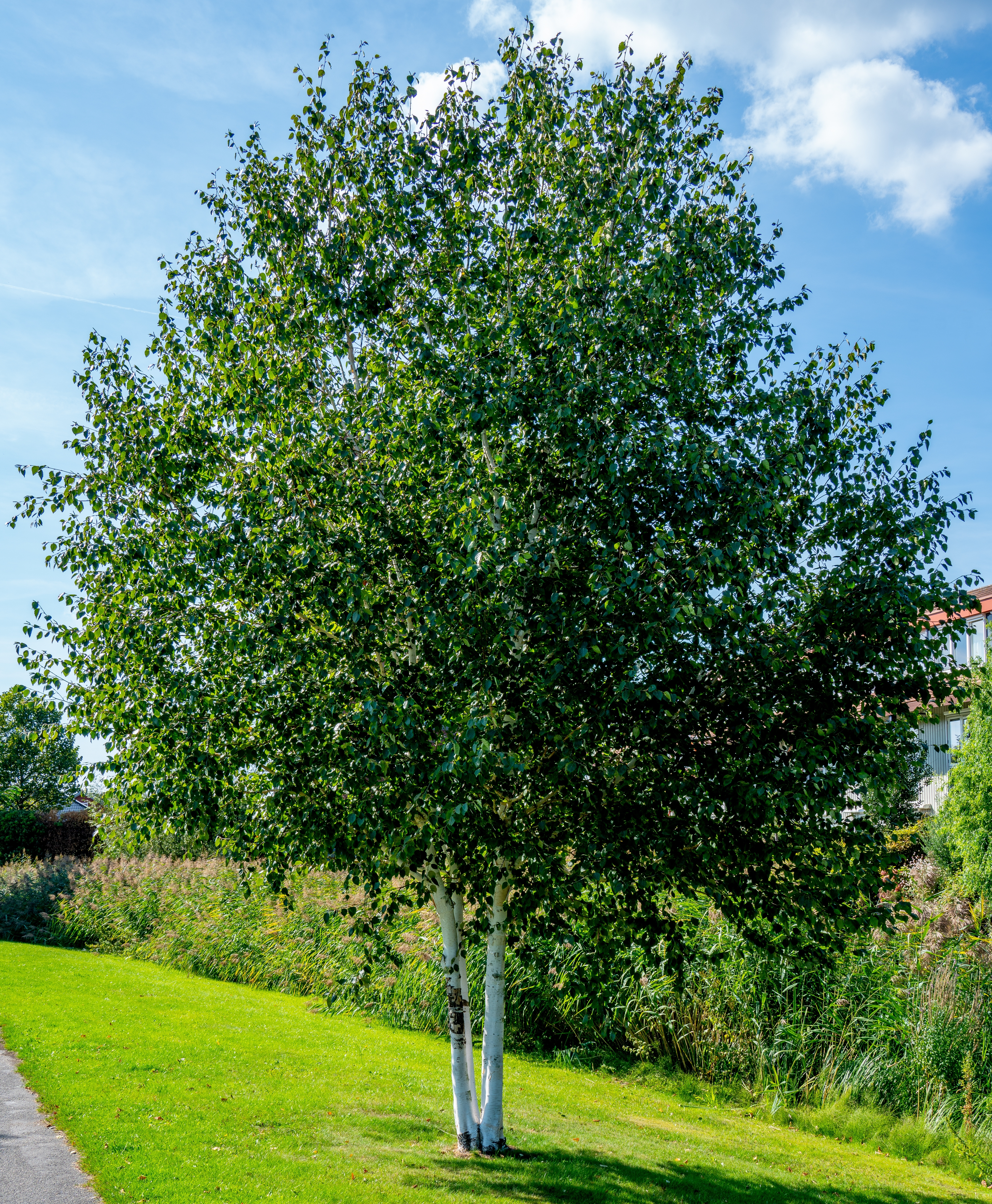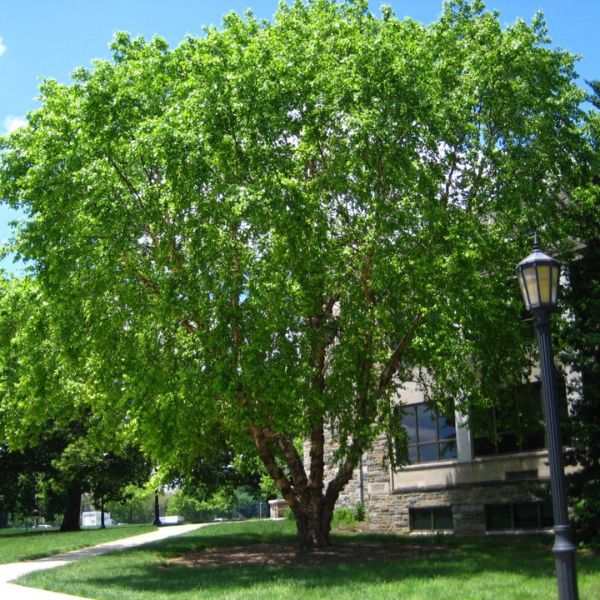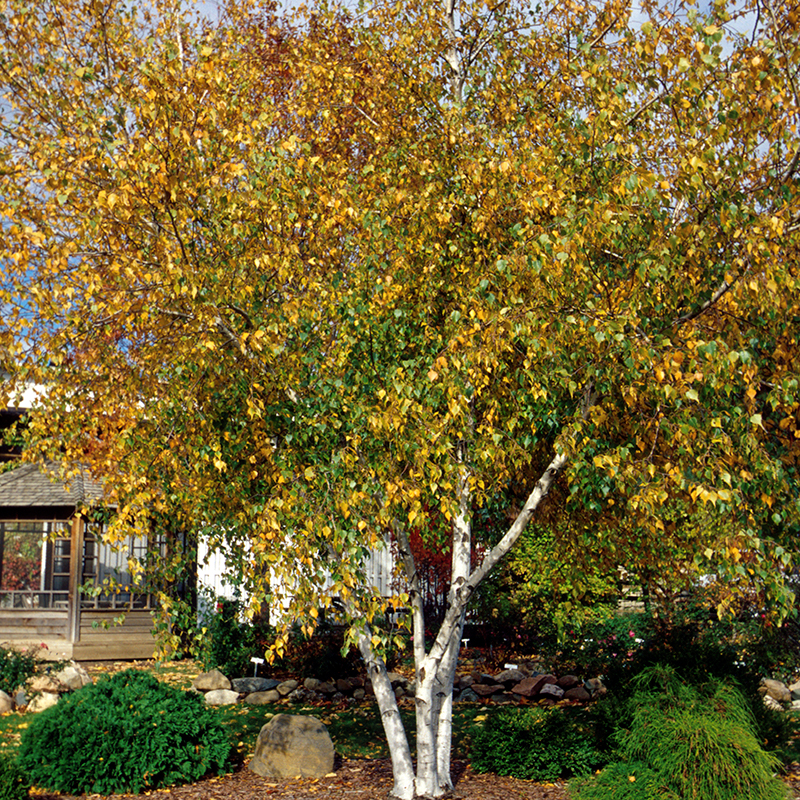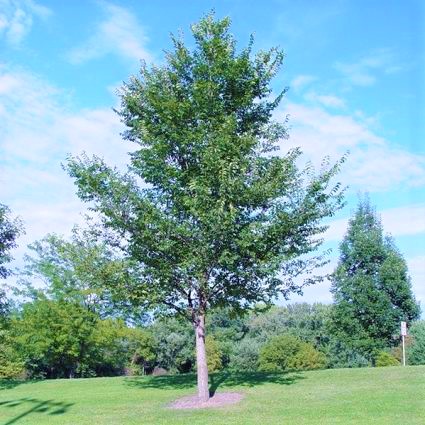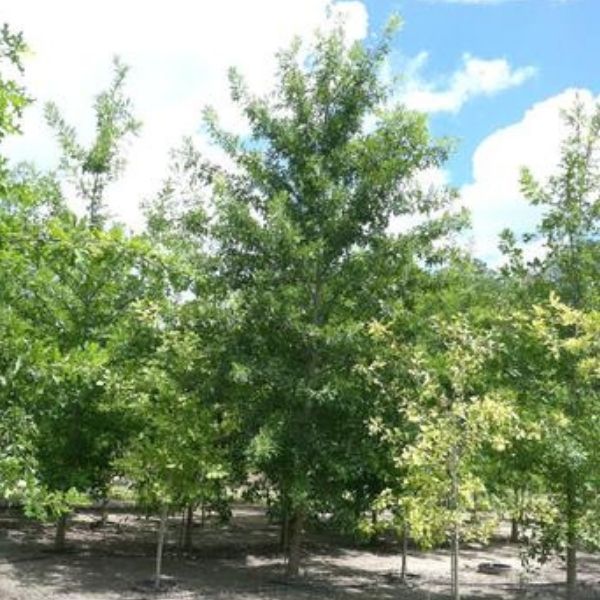

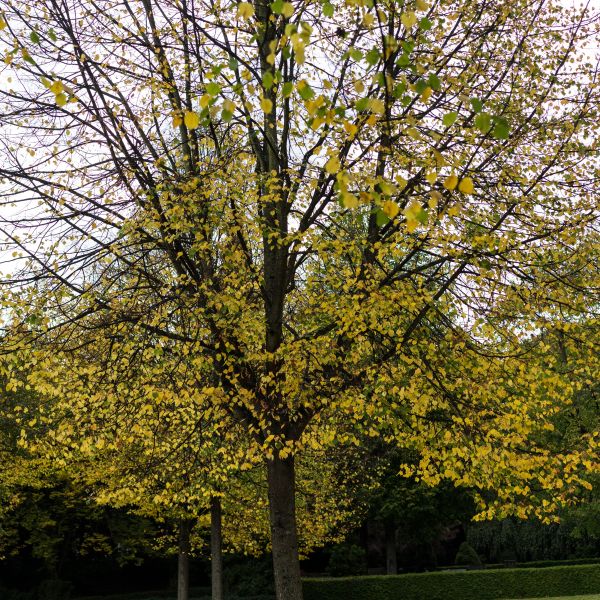
Nuttall Oak
Quercus nuttallii
52 reviews
Nuttall Oak
Quercus nuttallii
52 reviews
2.5 Gallon 4-5 Feet
We are sorry, product is currently out of stock due to seasonal availability. Please check the "Related plants available in your area" section below
Not just beautiful - intentionally selected by ShrubHub's 3D landscape design team to fit real-world spaces and maximize yard potential.
Why Nuttall Oak?
The Nuttall Oak (Quercus nuttallii) is a large, deciduous tree native to the southeastern United States. It is known for its sturdy, straight trunk and broad crown, which provides ample shade. The leaves are lobed and glossy green, turning vibrant shades of red and orange in the fall. Nuttall Oaks are important for wildlife, as they provide food and shelter for various species.
Related plants available in your area
Sunlight
Nuttall Oak requires full sun exposure to thrive.
Watering
The Nuttall Oak typically requires regular watering, especially during dry spells or drought conditions. Adequate moisture is essential for its growth and survival.
Fertilizing
The fertilizer requirement for Nuttall Oak depends on various factors such as soil nutrients, tree health, and growth rate. It is recommended to consult with a horticulturist or arborist for specific fertilizer recommendations tailored to the tree's needs.
Nuttall Oak (Quercus nuttallii)
The Nuttall Oak, scientifically known as Quercus nuttallii, is a magnificent deciduous tree native to the southeastern United States. This impressive tree belongs to the Fagaceae family and is loved for its stunning autumn foliage and its ability to adapt to a wide range of soil and climate conditions.
The Nuttall Oak typically grows to a height of 60 to 100 feet, with a spread of 40 to 60 feet, making it an excellent shade tree for large landscapes. Its broad, rounded crown provides ample shade during the hot summer months, while its open branching structure allows sunlight to filter through during the colder seasons.
One of the most striking features of the Nuttall Oak is its foliage. The leaves are deciduous, alternate, and simple, with a beautiful lustrous dark green color during the growing season. In autumn, they transform into an eye-catching display of vibrant red, orange, and yellow hues, creating a picturesque landscape.
This tree is also notable for its acorns. The Nuttall Oak's acorns are small and round, measuring around 0.5 to 1 inch in length. They have a cap that covers about one-fourth of the nut and provide a valuable food source for various wildlife, including birds, squirrels, and deer.
When it comes to soil preference, the Nuttall Oak is relatively adaptable. It thrives in moist, well-drained soils but can also tolerate periodic flooding. In the wild, it is commonly found in floodplains, bottomlands, and along streams. This adaptability makes it an excellent choice for landscaping projects in diverse environments.
In terms of climate preference, the Nuttall Oak performs best in USDA hardiness zones 5 to 9, where it can withstand both hot summers and cold winters. It is known to be relatively heat-tolerant and can adapt to both humid and dry climates.
Overall, the Nuttall Oak is an exceptional shade tree that offers year-round beauty and benefits to nature. Its remarkable autumn foliage, adaptable nature, and attractive acorns make it a valuable addition to any landscape or garden project.
Plant Information:
| Botanical Name: | Quercus nuttallii |
| USDA Zones: | 5 - 9 |
| Water: | Moderate |
| Exposure: | Full Sun |
| Soil Needs: | Well-Drained |
| Mature Height: | 40 - 60 feet |
| Mature Spread: | 25 - 35 feet |


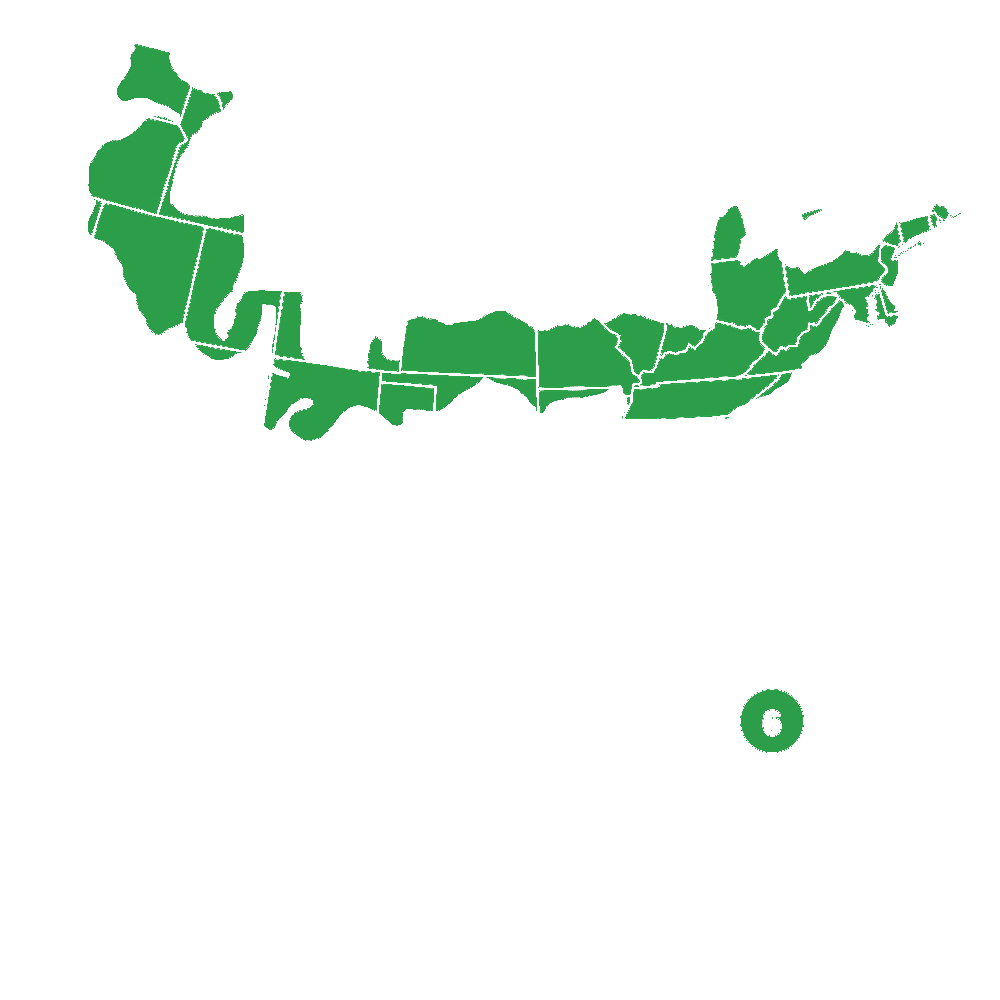

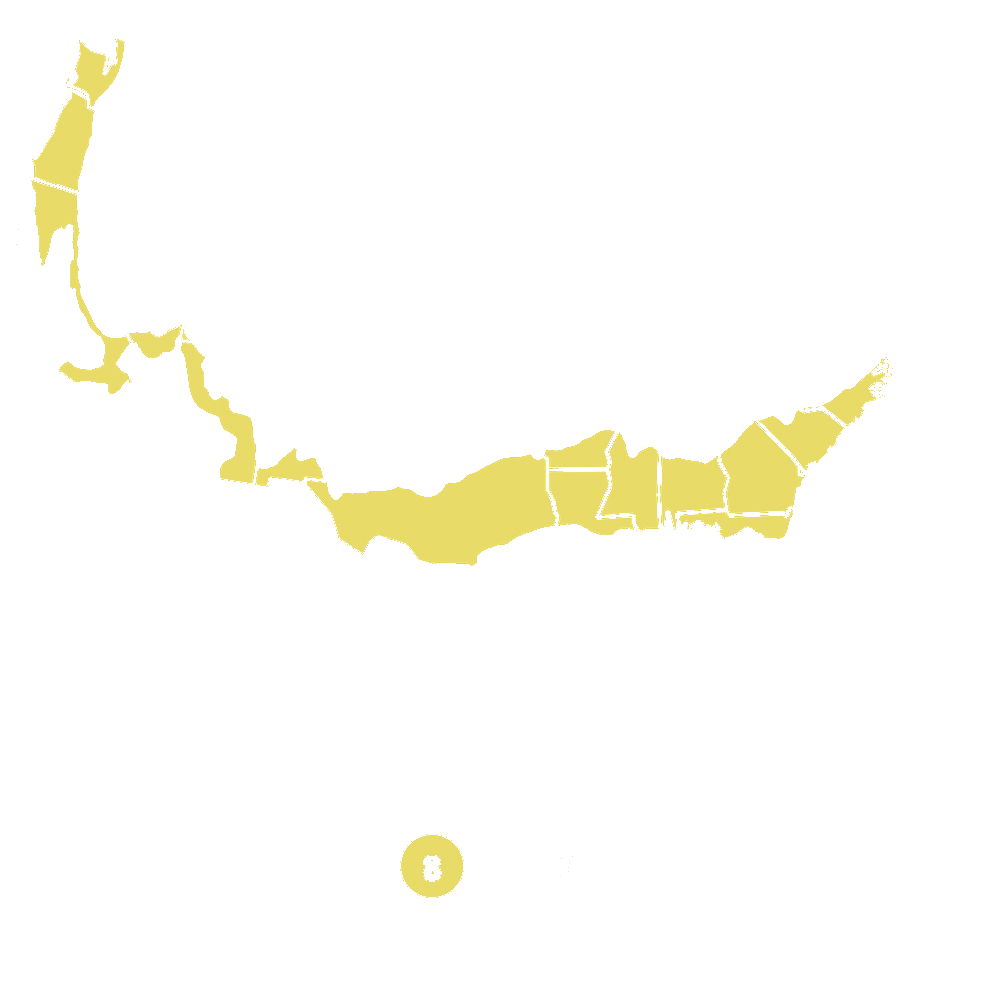

Pollination Info
Pollination Info for Nuttall Oak (Quercus nuttallii)
Nuttall Oak (Quercus nuttallii) is a deciduous tree native to the southeastern United States. It belongs to the beech family, Fagaceae, and is commonly found in bottomland forests, floodplains, and along rivers and streams.
Pollination Process
The pollination in Nuttall Oak is achieved through a process known as wind pollination or anemophily. Unlike other trees that rely on insect or animal pollinators, Nuttall Oak produces separate male and female flowers on the same tree.
Male Flowers
The male flowers, known as catkins, are long, cylindrical structures that bear numerous tiny flowers. These catkins dangle from the branches during spring and release pollen into the air.
Female Flowers
The female flowers of Nuttall Oak are small and inconspicuous, lacking petals or showy parts. They are located in the leaf axils of new growth and are often clustered together. Each female flower consists of an ovary with three stigmas.
Pollen Dispersal
Since Nuttall Oak relies on wind to transport pollen, it produces large amounts of lightweight, powdery pollen. The pollen grains are small and easily carried by air currents.
Pollination Mechanism
As the wind blows, it carries the pollen grains from the male flowers to the female flowers of Nuttall Oak. Some of the pollen grains may land directly on the receptive stigmas of the female flowers, while others may be transported by wind currents to neighboring trees for cross-pollination.
Fruit and Seed Development
If successful pollination occurs, the ovaries of the female flowers develop into acorns. Acorns are the fruits of oak trees and contain seeds. They take several months to mature and are usually ready for dispersal by the following autumn.
Importance of Pollination
Pollination is essential for the reproduction and survival of Nuttall Oak. It ensures the production of viable seeds, allowing for the continuation of the species. Additionally, acorns serve as a crucial food source for various wildlife, including birds, mammals, and insects.
FAQ
Frequently Asked Questions about Nuttall Oak (Quercus nuttallii)
Q1: What is Nuttall Oak?
A1: Nuttall Oak (Quercus nuttallii) is a medium to large-sized deciduous tree native to the southeastern United States.
Q2: How tall does Nuttall Oak grow?
A2: Nuttall Oak can reach heights of up to 100 feet or more.
Q3: What are the identifying features of Nuttall Oak?
A3: Nuttall Oak has lobed leaves with sinuses that extend halfway or more toward the midrib. The acorns are large and bowl-shaped, and the bark is dark gray and shallowly furrowed.
Q4: What are the preferred growing conditions for Nuttall Oak?
A4: Nuttall Oak thrives in moist, well-drained soils and prefers full sun to partial shade.
Q5: Can Nuttall Oak tolerate flooding?
A5: Yes, Nuttall Oak is known for its ability to tolerate temporary flooding and is commonly found in bottomland hardwood forests.
Q6: When does Nuttall Oak produce acorns?
A6: Nuttall Oak typically begins producing acorns around the age of 20. The acorns mature and drop in the fall.
Q7: What wildlife benefits does Nuttall Oak provide?
A7: Nuttall Oak acorns are an important food source for various wildlife species, including deer, squirrels, turkeys, and ducks. The tree also provides nesting sites and shelter for birds and small mammals.
Q8: How fast does Nuttall Oak grow?
A8: Nuttall Oak is a fast-growing tree, especially in its early years, with an average growth rate of 24 inches per year.
Q9: Is Nuttall Oak susceptible to any diseases or pests?
A9: Nuttall Oak is generally considered to have good resistance to pests and diseases, although it may be susceptible to oak wilt and various fungal pathogens.
Q10: Can Nuttall Oak be planted in urban areas?
A10: Yes, Nuttall Oak can be planted in urban areas as it tolerates a wide range of soil conditions and is fairly adaptable.
Planting & Care
Planting & Care for Nuttall Oak (Quercus nuttallii)
Planting
- Choose a suitable location: Nuttall Oak thrives in full sun and well-drained soil. Select a location with enough space for the tree to grow and spread its branches.
- Prepare the planting hole: Dig a hole that is two to three times wider than the tree's root ball and just as deep. Break up any compacted soil at the bottom of the hole.
- Planting process:
- Gently remove the tree from its container or burlap wrapping, if applicable.
- Place the tree in the hole, ensuring that the top of the root ball is level with or slightly above the ground.
- Backfill the hole with the excavated soil, firming it gently around the roots.
- Water the tree thoroughly to settle the soil.
- Mulching: Apply a layer of organic mulch around the base of the tree, leaving a small space around the trunk to prevent moisture buildup and fungal issues.
- Watering: Nuttall Oak requires regular watering during the first few years of establishment. Water deeply once a week, keeping the soil moist but not waterlogged. Reduce watering during rainy periods.
Care
- Pruning: Nuttall Oak generally requires minimal pruning. Remove any dead, damaged, or crossed branches in late winter or early spring. Avoid excessive pruning, as it can affect the tree's shape and health.
- Fertilization: Nuttall Oak usually does not require fertilization if planted in healthy soil. However, for poor or depleted soils, a slow-release or organic fertilizer can be applied in early spring.
- Pest and disease control: Nuttall Oak is relatively resistant to pests and diseases. However, regular inspection for signs of pests like oakworms or diseases like oak wilt is still recommended. Consult with a local arborist for appropriate treatments if necessary.
- Protection from damage: Protect young Nuttall Oak trees from herbicides, lawnmower injuries, or other physical damage. Install tree guards or fences until the tree establishes itself.
- Monitoring and care: Regularly monitor the tree's growth and overall health. Keep the area around the tree free from weeds and other competing plants. Maintain a safe zone around the tree to prevent construction damage.
Check Out These Verified Customer Reviews:
Customer Reviews
4.7 out of 5 based on 52 reviews
Thank you! Your review has been submitted.
The Nuttall Oak I received was in excellent condition and the quality of the tree exceeded my expectations. The website was easy to navigate and the shipment was fast. Overall, I'm very satisfied with my purchase.
I absolutely love my Nuttall Oak! It's exactly what I was looking for. Highly recommend.
The Nuttall Oak arrived in perfect condition. It looks even better in person!
Item has been added to your cart.



